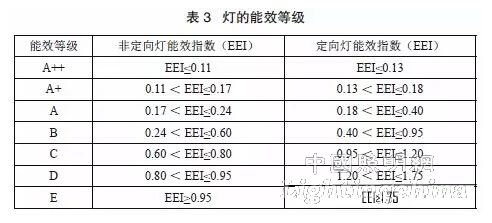As a new type of lighting product, LED (Light Emitting Diode) has been widely used in various lighting fields. In order to strengthen energy-saving management, promote energy-saving technology and improve energy efficiency, many countries in the world have standardized the energy efficiency of LED lighting products. In January 2008, China began to incorporate lighting products into energy efficiency management measures in the third batch of energy efficiency label implementation products, while the United States mainly required energy efficiency for LED lighting in its Energy Star (ES) certification. The EU's energy efficiency requirements for LED lighting are mainly reflected in the “Framework Directive for the Ecodesign Design Requirements for Energy-Efficient Products†(ErP Directive).
1. China Energy Efficiency Standard
In recent years, in order to adapt to the development of the LED lighting industry, China has stepped up its research on LED lighting product standards, and has formulated standards for energy efficiency and performance for non-directional self-ballasted LED lamps.
1.1 Non-directional self-ballasted LED lamp energy efficiency requirements
According to the provisions of GB30255-2013, the standard divides the non-directional self-ballasted LED lamps into two types: full light distribution and semi-light distribution/quasi-complete light distribution. The energy efficiency grade is divided into three grades according to the initial light effect value (lm/W). See Table 1 for details.

1.2 Non-directional self-ballasted LED lamp performance requirements
The performance of non-directional self-ballasted LED lamps shall comply with the requirements of GB/T24908. GB/T24908-2014 specifies the performance of non-directional self-ballasted LED lamps from lamp power, power factor, initial efficacy/light flux, color characteristics, lifetime, and electromagnetic compatibility. The standard also divides the initial light effect of the lamp into three levels, as shown in Table 2.

It is not difficult to see from Table 1 and Table 2 that the limit value of GB30255-2013 for the energy efficiency rating of non-directional self-ballasted LED lamps is higher than that specified in GB/T24908-2014. When the manufacturer signs the energy efficiency of the product, it should refer to the above two standards at the same time, and the energy efficiency rating should meet the limits in GB30255-2013.
2. EU energy efficiency standards
The EU ErP Directive stipulates the general ecological requirements and special ecological requirements of energy-consuming products, and based on this, has developed a series of specific product ecological design requirements and implementation measures.
2.1 LED lamp energy efficiency rating
The European Union (EU) No 874/2012 energy efficiency labeling regulations clarify the energy efficiency rating and energy efficiency labeling of incandescent lamps, fluorescent lamps, high-intensity discharge lamps, LED lamps and modules, and lamps that use these lamps and are sold to end users. Provisions. The regulation divides the lamps into two categories: directional lamps and non-directional lamps, and defines the energy efficiency index (EEI), as shown in Table 3.

The calculation of the energy efficiency index (EEI) is as shown in Equation 1.
EEI=Pcor/Pref (Formula 1)
Pcor: is the correction of the rated power (Prated) measured by the lamp at the rated input voltage. For LEDs, if an external control is used, Prated needs to multiply a factor of 1.1; in other cases, Pcor is equal to the value of Prated.
Pref: is the reference power of the lamp, which is calculated by the effective luminous flux (Φuse) of the lamp by Equation 2 or Equation 3.
Effective luminous flux 1300Φuse< lm: Pref=0.88√Φuse +0.049 Φuse (Equation 2)
Effective luminous flux 1300Φuse ≥ lm: Pref =0.07341Φuse (Equation 3)